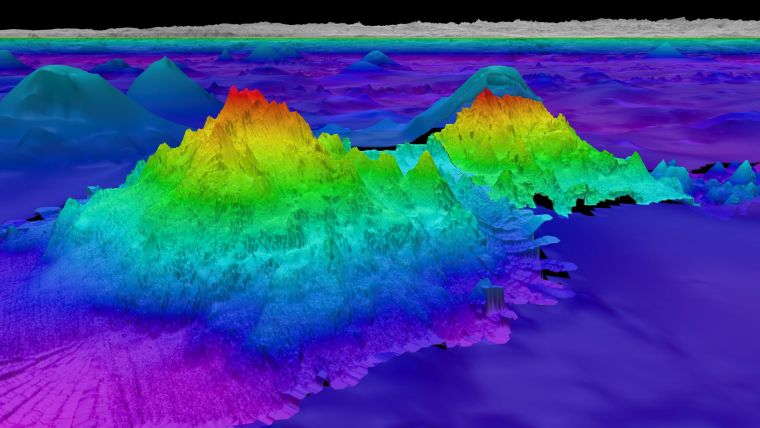Research vessel finds four new seamounts in high seas
The crew of Schmidt Ocean Institute’s research vessel Falkor (too) recently discovered four underwater mountains – the tallest of which exceeds 2.4km in height – during a January transit from Golfito, Costa Rica, to Valparaiso, Chile, as announced by the organization today. These new seamounts, ranging in size from approximately 1,591 metres to 2,681 metres, supplement the crew’s discovery in November 2023 of an underwater mountain twice the height of the Burj Khalifa, measuring 1,600 metres, in international waters off Guatemala.
Using multibeam mapping, Schmidt Ocean Institute’s marine technicians and trained hydrographic experts John Fulmer and Tomer Ketter confirmed that these seafloor features had not been previously included in any bathymetric database. The discovery of the seamounts occurred as the technicians plotted a course to examine gravity anomalies during the transit from Costa Rica to Chile. Alterations in the seafloor’s topography manifest as subtle shifts on the ocean surface; a deep trench induces a slight depression, while a mountain generates an almost imperceptible bump atop the ocean. These subtle indications assist experts in making discoveries and crafting more precise maps of the seafloor.
“We were fortunate enough to be able to plan an opportunistic mapping route using these gravity anomalies in satellite altimetry data,” remarked Fulmer. “Examining gravity anomalies is essentially looking for bumps on a map, and through this process we identified these sizable seamounts while staying on schedule for our first science expedition in Chile at the start of this year.”
Underwater topography gap
Whenever sea conditions permit, the crew gathers mapping data as the research vessel transitions between locations. Since 2012, scientists aboard Schmidt Ocean Institute’s research vessels Falkor and Falkor (too) have mapped approximately 1.5 million square kilometres and discovered 29 seamounts, hills and trenches. These underwater mountains and trenches often serve as habitats for deep-sea coral reefs, sponges, anemones and other organisms that find sustenance, shelter and a rocky surface to thrive upon along mountain slopes.
“A map is a fundamental tool for comprehending our planet – locating seamounts almost always leads us to understudied biodiversity hotspots,” noted Dr Jyotika Virmani, executive director of Schmidt Ocean Institute. “Every time we encounter these bustling seafloor communities, we uncover remarkable new insights and enhance our understanding of life on Earth.”
The absence of detailed underwater topography, or bathymetric data, hinders the ability to manage marine resources sustainably, safely navigate vessels at sea and protect coastal communities. Schmidt Ocean Institute collaborates with The Nippon Foundation-GEBCO Seabed 2030 Project, an ambitious initiative aimed at expediting ocean mapping endeavours and striving to map the entire seafloor by 2030.
“These remarkable discoveries by Schmidt Ocean Institute underscore the importance of a complete map of the seabed in our quest to understand Earth’s final frontier,” said Jamie McMichael-Phillips, project director of Seabed 2030. “With 75% of the ocean still to be mapped, there is much to be uncovered. Ocean mapping is crucial to our understanding of the planet and, in turn, our ability to ensure its protection and sustainable management.”















